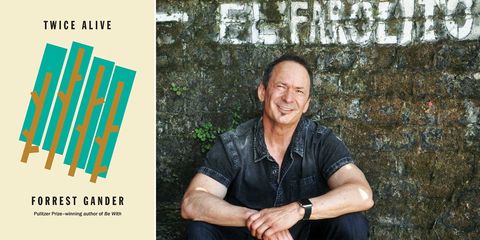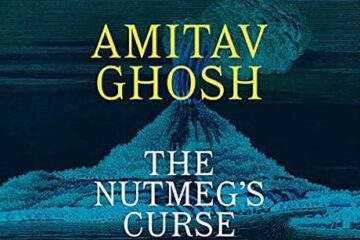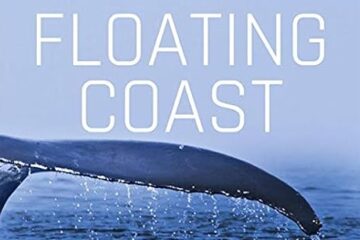Zoë Fay-Stindt | Book Review of Forrest Gander’s Twice Alive
New Directions Press, 2021
I came to Forrest Gander’s Twice Alive with questions: How to write an ecopoetics that speaks to multispecies thriving without stealing non-human voices? How to blur science deftly into the body of poetry without turning the poem into a classroom? I opened the collection armored in glinting academic terms—multispecies, more-than-human, interdependence—and was met with a textured, tender living. After all, what else do we come to poetry for but a glimpse inside another’s life? In Gander’s work, that living grows from rich humus.
Alongside these multispecies musings, I also had other ulterior motives in reading Gander’s latest work. On my journey writing through the bends and breaks of codependency, I was looking to Twice Alive for an answer to a call I had been sounding for a poetic body that speaks to parsing symbiotic from parasitic entanglements.
Gander’s answer? Don’t try. There is little parsing in “the merge,” as Whitman describes it, only the separate beings that came before and the transformed entities breathing through the “after.” But then again, even the binary of “before” and “after” become useless in the scheme of co-existence—there is only a long living, any sense of linearity or divide scrambled by the messiness of existence. And anyway, we are more possible, enlarged, together. Gander speaks to this open door in his introduction:
two things that merge, mutually altering each other, two things that, intermingled and interactive, become one thing that does not age
Gander’s ode to this co-evolution is a textured one. We open with—and see throughout—forms that visually expand the way a lichen on its stony buffet might: a prose poem in a large blocky body, broken up by small, beady points that offer beats of breath within the rivered language. And then there are the small bursts of field note-esque wonderings, punctuated by the occasional bolded word: moss, spongy, absence, oh, offering some of the more science-forward moments of the collection, which seem to be direct observations from the poet’s time with mycologist Anne Pringle.
But even the field notes, too, are deeply personal and disavow boundaries completely. The typically cordoned-off science practices of inspecting the natural world blur with intimate moments of being with that world and its many inhabitants:
I too am a fleshy protuberance risen momently from some tangle mycelium so the dead also speak when I speak oh holy holy communion
The final textured layer of this work, of this communion, comes in the form of Gander’s own photographs, which depict intricate barks with many splits and channels, later echoed in the slashes Gander cuts through his poems. Through these textures, these weavings, Gander dissolves the boundaries between self and other-than, and allows, even in the flattened pages of a book, an entry into that multispecies world. The bark on the page becomes a re-embodiment of the page’s former self—both ode and elegy.
So, what of that multispecies chorus I came hunting for? With Gander as the only speaker, these poems are anthropocentric, to be sure. But from them pulse the voices of Gander’s environment:
if we cared to look out over bitesize squares of cheese and Saintsbury wine into the hum taking place under a coved moon, or care to listen to clumped wild-rye shushing the dunes while pulverized rock shrieked along fault lines in decibels so muted only the soles of our feet, conducting the ground’s sound up into our tali, could register what was happening right there where our lives had been cut off from themselves and become something else
This poetry is alive with the world, shushing, shrieked, the ground sound’s chorus conducted for us on the page. Here, the distance between our human selves and the world we are made of quickly disintegrates.
Per Gander’s framing of the book, what he weaves within this collection is a true “ecology of intimacies.” It’s a lyric of sex, of co-evolution, of dissolved divides, at once praise song and elegy for the breathing, breaking, regenerating world.
Where Gander’s previous collection Be With reckons with grief over the loss of his late wife, Twice Alive offers a hopeful look into new love. This new collection is not so much a tale of moving on as it is a continued “being with”—and with and with, stitching new growths from loss and grief into a patchwork of overlapped living, an eternal entanglement with few clear boundaries—much like, as he makes sure to show us, the delicate but ferocious work of lichens, who are because of their being-with: breaking down rock into mineral sustenance, in “synergistic alliance” with fungus, algae, and cyanobacteria. Gander reminds us, again, that nobody ever is on their own. We, too, are because—and with—each other, inextricably. Not as / romance, he writes, but the real consequence / of our mutuality.
Zoë Fay-Stindt (she/Z/they) is a queer, bicontinental poet with roots in both the French and American south. Her work has been nominated for the Pushcart Prize, featured or forthcoming in places such as Southern Humanities, Ninth Letter, and Poet Lore, and gathered into a chapbook, Bird Body, winner of Cordella Press’ inaugural Gwendolyn Brooks Poetry Prize. They live in Ames, Iowa, where they are an MFA candidate at Iowa State University and community farm volunteer. You can learn more at www.zoefaystindt.com.




